#a.d. 1512
Text



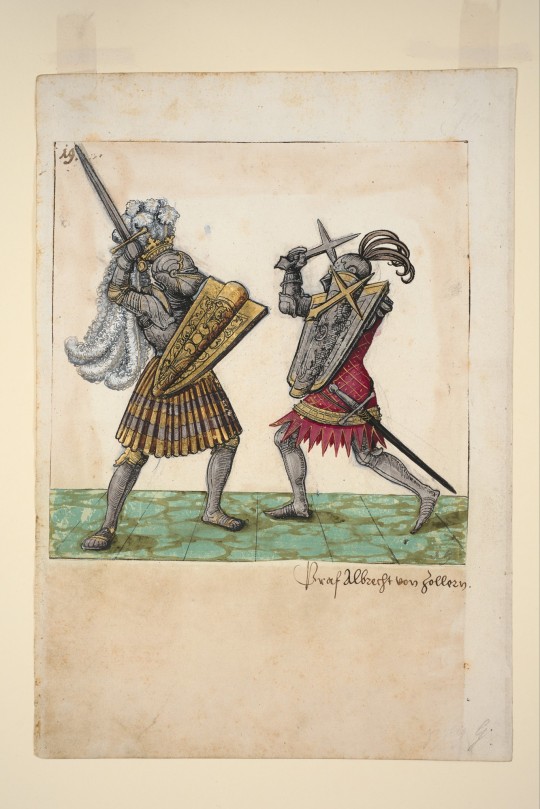
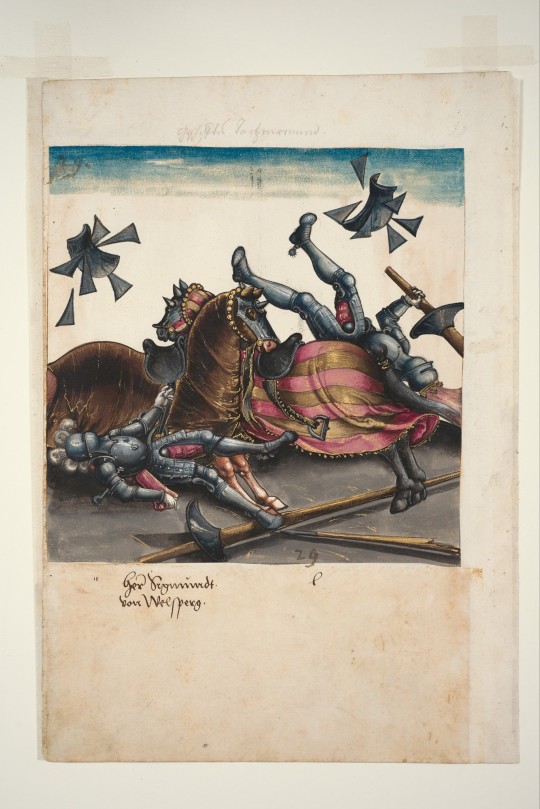
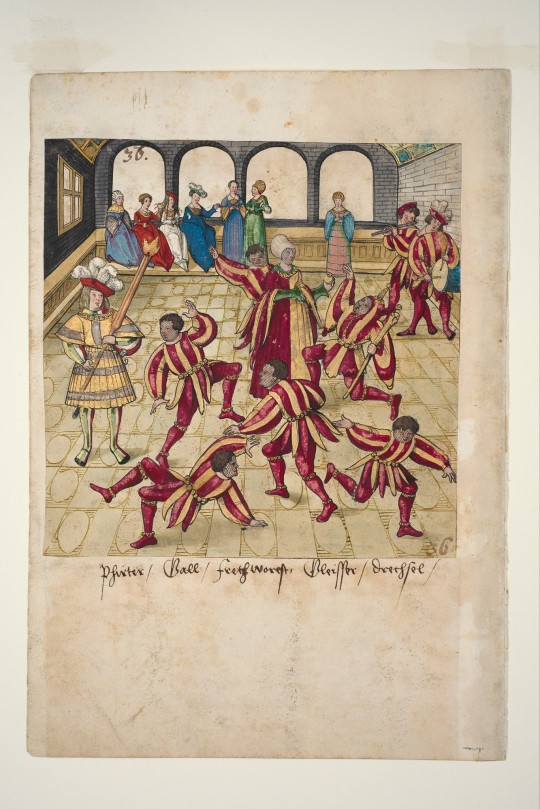
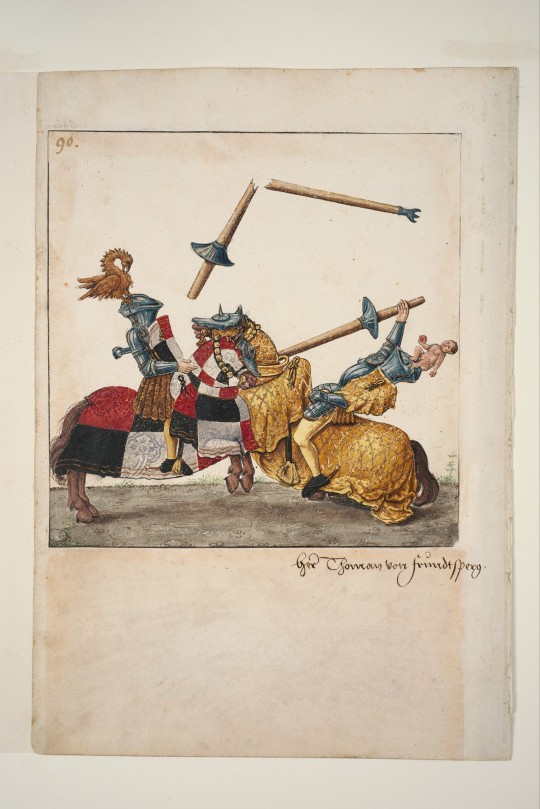
~ "Freydal": Tournament book of Emperor Maximilian I.
Culture: South German
Date: A.D. 1512-1515
Medium: 255 gouaches heightened with gold and silver in leather strap: paper; leather.
• From the source: The "Freydal" describes the tournaments during Maximilian's knightly love journey.
#history#museum#16th century#renaissance#freydal#tournament#horses#competition#Maximilian I#book#antique book#gouache#a.d. 1512#a.d. 1515
421 notes
·
View notes
Photo

Josiah, Jechoniah and Shealtiel, fresco — 1508-1512 Anno Domini by Michelangelo Buonarroti (1475 – 1564 A.D.)
0 notes
Text
A chronology for The Pale Horse
This is a small attempt to make a chronology for the events in The Pale Horse manhwa, including information from the latest chapter (212). It will all be under Read More due to SPOILERS. You read under your own risk. Keep in mind, there will be a few details and events missing.
Some dates were choosen arbitrarily. All of this is an exercise for my nerdy needs.
Sometime between 1900-400 B.C.* our witch was offered as a sacrifice by druids in order to grant eternal life to some important male figure. She received it instead. All of this happened in Ireland.
400-146** B.C. Our witch gets killed (and possibly raped) by Dorieus and his friend.
146 B.C - 476*** A.D. Our witch has a relationship with a roman general (most of it, in order to survive).
476 AD - XIII-XIV century**** - Our witch enters a relationship with an european high-standing man. Sometime later, she is ‘taken’ as a war trophy from the ‘pagans’ she was living with and taken to Groningen (current Netherlands) by some ancestor of the Mulder Family.
XIII/XIV century - 1512. our witch is kept as an animal by the heads of the Mulder family until the last one takes her as his ‘lover’.
7th November of 1512. The Jansen brothers meet the witch, under the name of Rosalind, for the first time.
1542 - The events that led to the disaster at Adelheid’s castle and hers and Miriam’s second birth.
XVII century - Rosalind’s & Benjamin’s second meeting with Adelheid & ‘Alicia’.
1793/1794 - Birth of Mary Bousset
1799/ 1800 - Birth of Leah Moreau
1810/1811 - Mikhail Grand reaches the village after deserting Napoleon’s army.
1813/1814 - Mary Bousset marries Mikhail Grand
1814-1815***** - Ian Hunter marries the witch; years later the disaster happens at his village in England. She was living under the name of Charlotte. (C. 197)
1815 - Births of Theodore Grand, Kiara and Jack O. The witch lived in Ireland under the name of Emily.
1823 - The witch was living in rural France under the name of Margot. Guiness and her are ambushed by a combination of the hunters and villagers and she is murdered. Year of birth for Pierre Grand, Marianne Blangé and Rose Dupré.
1835 - Events of the first season from the manhwa.
1843 - Current events of the manhwa.
*By chapter 192 the witch stated beliefs for the Tuata De Danann, after a quick wiki search, their supposed (and very discussed) historical age goes from 1897 BC to 1477 BC, however, we are talking about ancient myths filtered by Christianism and analyzed many centuries later by historians. Therefore, take these numbers with a graint of salt. After all, both Benjamin and the witch refer to the past as ‘thousands’ of years. It is ambiguous as hell, as she could have lived after the real historical events of the Tuata de Dannan became myths but stil remained in ancient times. Another theory states the affluence of celtic influences from migrations filtered and adapted Ireland’s previous native myths. This is ambiguous AF, as no one is sure about what happened there.
**The art style is intended to appeal Ancient-Greece-vibes, heck, even the guy is called Dorieus. I chosed 146 b.C. as that was the year of the Battle of Corinth; in the aftermath, roman’s military control became predominant in Greece; though, during that time our witch could have been living in some part of the Roman Empire with strong greek influences, after all, in Ancient Rome Greek Culture was popular as it was seen refined by the Roman elites.
***I choose 476 as that year was the fall of the Western Roman Empire, but the memories could be from later periods. She could have been living in some other part of the empire.
****I’ll go with the late XIII century and all of the XIV. The current head of the Mulder family stated his forefathers brought the ‘family heirloom’ from war in pagan lands. In some places such as Lithuania and Poland remained pagan practices, we ignore where was the witch living and as such, there’s quite a big temporal and geographic margin. The narration is not very clear, but I suppose the witch was brought to the castle by either the current head’s grandfather or a previous generation. This is very ambiguous.
*****A pregnancy lasts around nive months, so, the witch getting pregnant by Ian, the disaster happening, her running away and meeting of the twins’ adopter father could have happened between those two years.
18 notes
·
View notes
Photo

In Game:
Masyaf was an isolated mountain municipality, located in the Orontes Valley in western Syria among the An-Nusayriyah Mountains. For a long time, it served as a base of operations for the Assassin Order during the High Middle Ages, but fell into disrepair after the Mongol siege of 1257. By the early 16th century, it was temporarily occupied by Byzantine Templars.
The fortress of Masyaf was established in 1162 as an Assassin base by a man who would later be popularly known by his title of Al Mualim (real name Rashid ad-Din Sinan). He was sent from Alamut to establish the fortress by Hassan the Younger, the leader of the Levantine Brotherhood at the time. While ostensibly, this was a command by Hassan to cultivate Assassin influence in the Levant, rumors circulated as to the exact reason. Some Assassins believed that there had been a schism between the two owing to ideological differences, with Al Mualim leaving to create his own independent Assassin Order entirely. There were even whispers that Al Mualim was motivated not merely by a desire for independence, but power lust, an ambition to act as a king on his own, without the influence of Hassan.
Saladin, a Sultan of the Ayyubid dynasty of Egypt and Syria and also the commander of the Muslim armies united against the invading armies of Europe, under Richard the Lionheart during the Third Crusade, attacked the fortress, hoping that he could prevent the assassins from making a successful attempt on his life. On the second night of the siege, Master Assassin Umar Ibn-La'Ahad infiltrated the Sultan's tent and left a knife in Saladin's sleeping pallet. However, Saladin awoke and raised the alarm, and Umar was forced to kill a Saracen nobleman during his escape. Saladin agreed to leave, but not before he demanded that Umar be beheaded for his murder of the Saracen nobleman.
In 1189, Masyaf was attacked again, though this time by Templar Crusaders after one of their agents infiltrated the ranks of the Assassin Order; the fortress was captured by the Crusaders, after which Al Mualim was held hostage. As a result, a battle between the two forces raged on in the village, however, through the efforts of the Assassin Altaïr Ibn-La'Ahad, the fortress was reclaimed and Al Mualim saved. With the fortress recaptured, the Assassins were able to drive the Templars from Masyaf.
Al Mualim came into possession of an Apple of Eden in 1191 after it was retrieved by Malik Al-Sayf from Solomon’s Temple. The Templars that also sought the Apple, including Grand Master Robert de Sablé, followed Malik’s blood trail back to Masyaf and attacked, hoping to regain the Apple. Altaïr helped to spring a trap on the Templars, crushing them with falling logs, forcing them to retreat.

Later that same year, Al Mualim used the Apple to enslave the citizens of Masyaf. Altaïr was able to stop him by murdering his former teacher and reclaim the Apple. After Al Mualim’s death, Abbas Sofian attempted to take the Apple for himself, but was also defeated by Altaïr.
Sometime before 1227, Abbas staged a coup d'état and was able to take over the Order. Losing control of the Assassins in Syria, and after the death of Altaïr’s wife, Maria Thorpe, and Malik, Altaïr fled the city, and entered a self-imposed exile. Abbas reigned for twenty years before Altaïr returned and murdered Abbas with the newly invented hidden gun.
Masyaf was abandoned around a decade later. Altaïr had constructed a library, compiling the information he had learned from the Apple, but he sent his Niccolò and Maffeo Polo, who were guests of the Order, invited by Altaïr's eldest son, Darim, away with the books and the memory seals to his library. Altaïr then took the Apple that Malik had retrieved from the Temple so many years ago and locked himself in his now empty library where he died at the age of ninety-two.
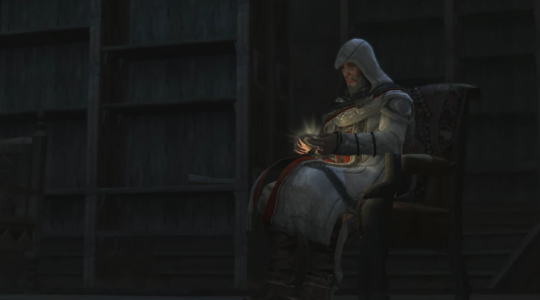
Ezio Auditore da Firenze managed to get to Masyaf a few centuries later to find that it had been overrun with Byzantine Templars. After killing their leader and retrieving all of the Masyaf Keys, Ezio returned to Masyaf in 1512 with Sofia Sartor entered the library to find that it was empty save for Altaïr’s skeleton and his Apple of Eden.
In Real Life:
Masyaf castle ( قلعة مصياف) is located in the town of Masyaf in Hama Governorate, Syria, situated in the Orontes Valley, approximately 40 kilometers to the west of Hama. It served to protect the trade routes to cities further inland such as Banyas. The castle itself stands on a limestone platform about 20 meters above the surrounding plain and was likely built around the time of the Byzantine Empire.
The citadel became famous as the stronghold from which Rashid ad-Din Sinan, known as the Old Man of the Mountains ruled. He was a leader of the Syrian wing of the Hashshashin sect, also known as the Assassins, and a figure in the history of the Crusades. A trained Hashshashin himself and a powerful Northern Syrian warlord, Sinan controlled and ruled over the trained killers.
Although the original castle itself was Byzantine in origin, levels were added by the Nizari Ismailis, Mamluks, and Ottomans. The castle was captured by the Assassins in 1141 from Sanqur (who had held it on behalf of the Banu Mundiqh of Shayzar) and was later refortified by the Mentor of the Assassins.
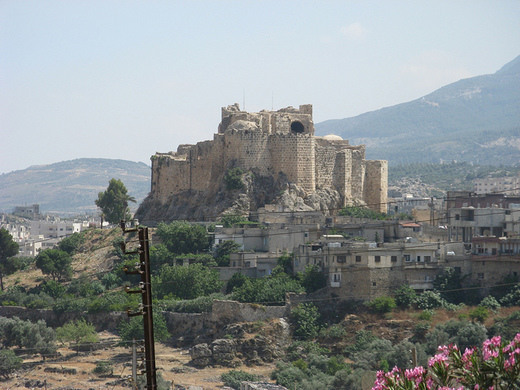
(Image Source)
It was from this fortress that Rashid ad-Din Sinan ordered his assassins to take out several different targets, such as the King of Jerusalem and Saladin, the leader of the Saracen army. Fearing for his life, Saladin leid seige to the fortress in attempt to kill Sinan.
According to legend, an assassin snuck into Saladin’s tent during his seige. Some accounts say that he left a dagger and a note. Others say that a poisoned cake was left, but the note said something to the effect of “You are in our power.” Although Saladin had defeated Crusader castles with much stronger defenses, the intimidation worked, and Saladin arranged a peace negotiation with Sinan.
In 1260 A.D., Masyaf and three other Assassin fortresses surrendered to the invading Mongols. However, the Mongol victory was short-lived as they were defeated by the Mamelukes at the Battle of ‘Ayn Jalut in the same year. Once the Mongols were expelled from Syria, some sources say that the Assassins were back in control of Masyaf. Ten years later, the Mamelukes under their sultan, Baibars, took control of Masyaf. Whilst the Assassins eventually disbanded, the castle remained a part of the landscape.
Masyaf, along with the rest of Syria, was incorporated into the Ottoman Empire in 1516 and 1517, after the Ottoman victory over the Mamluks at the Battle of Marj Dabiq. Masyaf became a part of the liwa (district) of Homs, and along with the other Ismaili fortresses in its vicinity (qala' al-da'wa), was responsible for paying a special tax. The town had a khan which paid tolls to the Ottoman authorities. The tolls were abolished later in the mid-16th century. According to the Sufi traveler Abd al-Ghani al-Nabulsi, the emir of Masyaf in the early 1690s was a descendant of the Arab Tanukh tribe named Sulayman.
In 1703, the Raslan clan, an Alawite tribe, took over Masyaf and controlled it for about eight years until it was restored to the Ismailis following the intervention of the Ottoman authorities. In 1788, the emir of Masyaf, Mustafa ibn Idris, built a sabil (ablutions fountain) and a house that would be used by himself and successive Ismaili emirs.
In 1808, the Raslan clan led by Sheikh Mahmud Raslan attacked Masyaf, killing its Ismaili chief, Mustafa Milhim, and his son, and captured the fortress. About 300 of the town's Ismaili inhabitants were also killed, while many others, including a Dai, fled for Homs, Hama and other areas in central Syria, settling in those places temporarily.

(Image source)
In modern times, conversion work began in an attempt to preserve the fortress, beginning in the year 2000. Part of this conversion and restoration project involves uncovering chambers and passageways used by the assassins in addition to ceramics and coins, in an attempt to learn more about not only Rashid ad-Din Sinan himself, but also the order he ran.
Sources:
http://www.reuters.com/article/us-syria-castle-assassins-idUSL1114464920070713
http://www.ancient-origins.net/ancient-places-asia/masyaf-castle-seat-assassins-001888
http://www.atlasobscura.com/places/castle-of-musyaf
https://books.google.com/books?id=qXG6AAAAIAAJ&q=Masyaf+Ismaili+Alawi&dq=Masyaf+Ismaili+Alawi
https://www.washingtoninstitute.org/uploads/Documents/pubs/PolicyFocus132_Heras4.pdf
41 notes
·
View notes
Text
Dizionario dell'esoterismo. Storia, simbologia, allegoria. Golem

Dizionario dell'esoterismo.
Storia, simbologia, allegoria
Golem
Golem significa massa informe. Anche se conosce un'esistenza culturale tardiva, in particolare con Rabbi Loeb di Praga (1512-1609) ed è oggetto di adattamenti letterari nel XIX seolo (Jacob Grimm, Achim von Armin ed E.T. Hoffmann) e nel XX (G. Meyrinch) e di adattamenti cinematografici (Wegener, il Golem 1920), la nozione di Golem ha le sue radici nella più anica tradizione cabalistica ebraica.
Il Golem è la creazione magica di Abramo dopo i tre anni di meditazione sul Sefer Yezirah. Infine è la replica su scala umana dell'uomo spirituale, del potere creatore di Dio. Attraverso l'unione di questi tre aspetti, il Golem può costituire la chiave per decifrare tutte le sue varianti. che secondo le culture e i secoli (dal Vodu a Pinocchio, passando per l'homunculus di Paracelso, l'automa del XVII secolo e il robot del XX) indicano implicitamente la presenza del mito.
Ritrovare il senso del Golem significa ritrovare le chiavi della sapienza. Il suo disconoscimento fa pesare sull'uomo la minaccia dell'annientamento, quando egli non è illimitato dal Verbo della Scienza Sacra, e ciò può avvenire nell'epoca della robotica come nel XVI secolo, con le imprudenze degli apprendisti stregoni distrutti dalla loro stessa opera.
Che cosa dice la leggenda del Golem? Anche se ne esistono parecchie di versioni si tratta di una creatura di argilla modellata da un adepto, cabalista, e da lui animata per mezzo dell'iscrizione Emeth impressa sulla fronte. La preparazione dell'argilla deve seguire un rituale che fa agire le lettere dell'alfabeto ebraico raggruppate in quadrati magici e pronunciate secondo le duecentoventuno forme dell'alfabeto segreto. Il nome ineffabile è raddoppiato: allora viene preferito il Chem Hamephorasch. Caratteristica del Golem è la sua rapida crescita e la sua forzza brutale. Lo si può distruggere solo togliendo da Emeth la prima lettera, un Aleph, e procedendo all'inverso di quanto fatto in precedenza: recita delll'alfabeto segreto dal fondo, in senso contrario a quello seguito durante la prima recitazione.
Adamo, è un Golem fino al momento in cui Dio gli ha indufflato nel Neschamach. Dotato di Nefesh e dii Ru'ah, non è ancora l'Adam Kadmon, ma una 'massa informe', come testimonia il Salmista: <<I suoi occhi hanno visto il mio Golem>>. Il Golem è il primo stato di Adamo, a cui Dio ha mostrato, quando l'uomo era senza vita e senza parola, tutte le generazioni future, fino alla fine dei tempi. E' notevole che il testo prosegua con un riferimento allo stesso Libro in cui tutto è scritto: <<E sul tuo Libro erano tutti scritti i giorni che mi erano destinati>>. E' attraverso la meditazione su un simile libro, il Sefer Yezirah, che Abramo ha creato a sua volta secondo Juda ben Balisar: <<Quuando nostro padre Abramo venne, guardò, considerò e vide, sondò e comprese, rovesciò, scavò, coombinò e costruì, e vi riuscì>>. La comprensione del Sefer Yezirah permette dunque l'imitazione del processo creativo. Da quì deriva la portata magica del Libro della Cabala in generale, la creazione del Golem in particolare. A.D. Grad afferma: <<La Cabala non può essere trattata che nella sua unità>>. Il Golem esprime dunque in modo analogico il potere creativo di colui che, a somiglianza di Dio, conosce l'uso delle lettere sacre. Ma quasi per velare la portata magica della scienza di cui è tuttavia una chiave, il Golem implica altre caratteristiche, che lo rendono minaccioso, tenebroso. Rimanda all'uomo stesso, ancora attardato alla sua manifesta imperfezione. Il pericolo è per colui che non ha la perfetta padronanza della scienza, che non è un uomo di fuoco. La creazione del Golem, infatti, è impossibile per chi non è il vero Adamo primordiale, attraverso la conoscenza e la meditazione. Così G. Scholem fa giustamente osservare il duplice carattere, tellurico e magico del Golem. La magia è la rinascita di cui parla Paolo, che fa della creatura nuova non un essere psichico (Nefesh, Ru' ah), ma un essere pneumatico (Neschamah). La santificazione del nome di Dio è nel Pater il primo metodo rivelato per tale rigenerazione. La Materia Prima dell'alchimista simboleggia, come l'argilla del Golem o quella di Adamo, la prima tappa di un processo di trasmutazione.
<<Per stanare il Golem dall'uomo, per risvegliarlo, si deve ricorrere alla conoscenza>>, A.D. Grad. La relazione tra il Golem e la Sapienza è un dao cabalistico ricavato dal loro valore gematrico uguale a 73. Ora, la Sappiena è Hochmach; è essa che può sottrarlo ai <<vincoli della realtà crporale: e fare dell'automa un vivente. Ma la vita è al vertice sommo dell'asse Malkhut-Hesod-Tiferet-(Da'th)-Kether (Corona della vita). Per raggiungere tale vertice, <<sembra che basti liberare il Neshamah dalla ganga golemico-emotiva>>.
La coincidenza tra Dio e il divino nel'uomo non può farsi direttamente, ma solo in un punto tangenziale in cui Dio si riflette. Questo punto si trova a una stessa distanza dall'Intelligenza (Binah) e dalla Sapienza (Hochmah): è la Sefira Daa'th che, esprime la scienza concepita come uuno stato di coscienza. O.M. Aivanhovne fa l'equivalente simbolico dello <<Specchio magico che...fa vedere la profondità della Sapienza esterna>>. Lo stiramento dell'uomo predamitico da un capo all'altro del mondo, la risonanza delle sue profondità telluriche, ne fanno dunque il depositario degli archivi del mondo, del libro della creazione. Ma è proprietà dell'uomo golemico che tale vacuità chiami il suo pieno, e il Libro il suo lettore ispirato.
Adamo intrattieme con la verità, una connivenza simbolica. Adamo si scirve: Aleph (1), Aleth (4), Mem (40); Emeth si scrive: Aleph (1); Mem (40), Thaw (400). La differenza degli zeri significa, dice A.D. Grad: <<un cambiamento di piano, senza modificazione del senso ontologico del numero>>. L'uomo è 'specchio' della verità, quando ascende al livello cosmico per il quale è assolutamente idoneo (1-4-40). Così passare da 1-4-40 a 1-4-400 equivale a progredire lungo l'asse centrale dell'albero cabalistico, attraverso Da'th. Il Golem destinato a diventare l'uomo di fuoco, Isch, che si scrive: Aleph (1) - Yod (10) - Schim (300), vi perviene in quanto mette il principio divino in primo piano (Aleph-1) e divide la luce dalle tenebre. E' così che diviene 'un vivente', cioè un figlio dell'uomo.
La materializzazione della coscienza, effetto della rinuncia dello spirito di fronte al mito prometeico delle seduzioni tecnologiche, fa vacillare l'equilibrio tanto delle società quanto delle vite interiori. Prometeo, come il Golem, è incatenato al sapere degli apprendisti stregoni. Per ricreare il mondo, e recitare in senso inverso l'alfabeto sacro, sarà necessaria una risalita del tutto spirituale, capace di colmare il vaso di Pandora. Senza ciò, l'automatismo elle azioni, regolato dal destino dei processi messi in movimento, sfugge alla vera padronanza, fondata su una conoscenza iniziatica dell'uomo. E' solo a prezzo della sofferenza e dell'esilio che la spiritualizzazione della materia finisc per dotarci della coscienza illuminata dai valori, e per ridare definitivamente al Padre la figura archetipica del Figlio che l'ha meritato.
Il Golem, contiene le strutture ancora inerti dello spirito creatore. Esso simboleggia il nostro inconscio collettivo, che rivivificato e chiarito dallo spirito, è l'anima del mondo, lo specchio e il libro della Saggezza.
0 notes
Text
When In Rome, Do As The Romans Do
They say that when in Rome, do as the Romans do. Having never been in Rome before, I wasn’t quite sure what it is that they do. It only took me about 5 minutes after arriving in the city to tell you what it is that Romans don’t do. Romans don’t use turn signals, they don’t yield to oncoming traffic, and they definitely don’t get stuck in a “bus/taxi only” lane while driving aimlessly around the same circle for over an hour – that last one is what I do! Well, after all of that senseless nonsense, I hope Romans “do” a lot of walking. I threw away my international drivers license, triple-parked the Alfa Romeo I rented, and Rebecca and I explored the entire city on foot. Despite it all, we actually had an amazing time and took plenty of pictures along the way. I hope you like our photographic journey through Rome.
I believe this lady needs a tour guide. Too bad she’s stuck with me!
Becca likes her Beck’s (although she’d much rather have red wine).
One of the great things about Rome is they allow you to walk around with refreshing adult beverages in hand.
Rebecca sits down to enjoy her first real Italian pizza.
Actually the pizza was a display and made out of plastic. Rebecca said she already knew that and she only ate it because it was the only one they had with gluten-free crust.
The Santa Maria dei Monti
This church was erected by Pope Gregory XIII in 1580 in dedication to the blessed virgin, Mary.
I look tough (even if only in my imagination)!
Rebecca stands in the forefront as Italian soldiers maintain security.
The Arch of Titus
Roman Capital Police on patrol.
A Roman street artist displays his craft on an ancient road bustling with tourism.
Exploring the Roman Imperial Forum – Archeological site.
Remnants of the columns that once surrounded the Temple of Minerva.
Rebecca is hanging out with Emperor Nerva who ruled from 96-98 A.D.
He must have made quite the impression. He was in power only two years and they gave him a statue!
“Excuse me sir, which way to Little Caesar’s Pizza? Oh, just over the hill there, thanks!”
To think, many of these ruins were from a time before even Jesus walked the earth.
Trajan’s Forum
Rebecca snaps a shot of the Vittorio Emanuele II Monument.
Buried under this horse and rider lies the tomb of an unknown soldier.
Believe it or not, this collosal monument is relatively new compared to the rest of Rome’s architecture. Each statue represents certain Roman values such as harmony, liberty, unity, and struggle.
Geez, man! Have you no modesty?
He may be carrying a spear and a shield, but it’s hard to take a man seriously when he’s wearing a pigeon on his head.
Museo Centrale del Risorgimento (Museum of Rome)
Forum of Caesar – 54 B.C.
Breathtaking History of the Glorious Roman Empire.
Rome- An archeological wonderland.
Sorry about that, officer. She’s somewhat of a badge bunny.
Italian military can be seen on almost every street in Rome.
This was our digs while in Rome – Best Western Artdeco Hotel.
This is a Roman breakfast. I hope you like cold cuts!
Rebecca in front of the Hotel Traiano.
Sacro Cuore di Gesú al Castro Pretorio (Sacred Heart of Jesus at the Praetorian Barracks)
A tour bus outside the Vittorio Emanuele II Monument.
Fontanella del Facchino – street fountain
Whenever I ger thirsty in Rome, I wouldn’t think of filling my cup anywhere but here.
Security is tight in front of the San Marcello al Corso.
One of Rome’s many magnificent cathedrals.
Do you ever get that paranoid feeling like there’s a man standing behind you watching… with a gun!
One of the twin churches at the Plaza del Popolo.
Statues portraying a personification of Rome between the rivers Tiber and Aniene, by Giovanni Ceccarini.
Tourists at the plaza congregate around the ancient Obelisco Flaminio.
The Roman god Neptune between two tritons, by Giovanni Ceccarini.
The Castel Sant’Angelo, once used by popes seeking refuge during times of danger.
A panoramic view of the Vatican grounds with St. Peter’s Basilica in backdrop.
A very Roman courtyard inside the Sistine Chapel.
It took Michaelangelo four pain-staking years painting the ceilings of this most historical chapel.
Emperor Nero’s purple bath inside the Pio Clementio Museum, Sistine Chapel.
The Marble Chariot
Splendidly painted ceilings by world reknown artists.
A resurrected Christ appears to astonished disciples in this beautiful tapestry.
The Gallery of Maps.
The Regions of Italy decorate the Galley of Maps exit.
A group of monks being hung from the rafters.
Artwork commemorating a new pope.
This wall is making me blush!
Why is it that one guy always has to go and ruin everything by showing up naked on a horse?
I’ve never seen so many naked people trying to escape a fire but…. can we put a bit of clothes on? There are women and children around!
The Creation of Adam and other works by Michaelangelo, 1512
This is the artwork that I waited in line for over two hours to see. I’m sorry the shot is somewhat out of focus. We weren’t allowed to take pictures in this room, but sometimes my camera phone goes off unintentionally at completely random moments.
Behind the scenes look at St. Peter’s Dome
A serene greenspace in the midst of the Vatican.
Rebecca takes a gander at the four hamhocks hanging from the door.
Outside the Santa Maria della Pace (Our Lady of Peace).
A panoramic view of the Piazza Navona.
Rebecca poses in front of a baroque fountain in the Piazza Navona.
The center fountain designed by world reknown architect, Gianlorenzo Bernini.
The intricate details of a painted dome.
The Trevi Fountain is believed to be the most stunning fountain in all of the world.
This fountain, dating back to ancient Roman in or around 19 B.C., provided water to the Roman baths and all of the fountains of central Rome. It is made from the travertine stone; the same material used to build the Colosseum.
Throw a coin over your shoulder and into the fountain for good luck.
Legend has it that a coin thrown into the fountain will ensure you a return trip back to Rome. This tradition also dates back to the ancient Romans who often threw in coins to make the gods of water smile upon their journey or help them get back home safely. Believe it or not, all of the coins are collected every night and given to an Italian charity.
Argh, my squinty one-eyed lady pirate!
Big John and Rebecca saying “addio” to Rome, we’ve got some more world to see!
I hope you enjoyed our little travels through the eternal city. Please check back at my blog soon, and in the meantime, go and have your own traveling adventure. Feel free to explore other areas of my blog, leave a comment, and show some love on social media.
Happy travels,
Big John
0 notes
Photo

Boaz, fresco — 1508-1512 Anno Domini by Michelangelo Buonarroti (1475 – 1564 A.D.)
0 notes